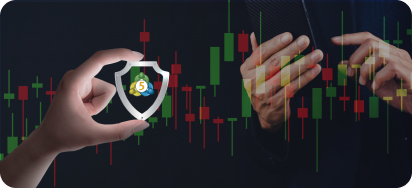Mastering Trading Strategies: From Basics to Pro-Level Tactics
Whether you’re a beginner trying to understand the markets or an experienced trader seeking consistency, trading strategies are the foundation of successful trading. Without a structured approach, even the most well-informed trader can fall victim to emotional decisions, inconsistent results, and preventable losses.
What Is a Trading Strategy?
A trading strategy is a set of rules that guide your decisions on when to enter and exit trades, what assets to trade, how much to risk, and how to manage open positions. It brings structure and objectivity to your trading, reducing emotional interference and helping you stick to a consistent approach.
At its core, a trading strategy includes:
- Market selection: What instruments you trade (e.g., forex, stocks, crypto)
- Trade setup: Conditions or signals that must be met before entering a trade
- Entry rules: When to enter a trade and at what price
- Exit rules: When to close the trade for a profit or loss
- Risk management: How much of your capital is at stake on each trade
Traders primarily use two main types of trading strategies: discretionary trading and rule-based trading.
- Discretionary trading involves making decisions based on analysis and experience. You interpret the market in real-time.
- Rule-based or mechanical trading follows a strict set of predefined rules, often automated through bots or EAs (Expert Advisors).
Why Trading Strategies Matter
A well-defined trading strategy is more than just a tool—it’s your defence against impulsive decisions, market noise, and unpredictable events. Without a strategy, traders often chase trades, second-guess themselves, or overreact to short-term market moves.
The reasons why every trader needs a strategy are:
Consistency Over Time
Markets are unpredictable in the short term. A strategy gives you a consistent process to follow, even during high volatility. This consistency improves long-term performance by reducing emotional interference and keeping your decisions logical.
Discipline and Emotional Control
Fear and greed are common pitfalls. A solid strategy with clear rules helps remove emotion from your trading process. Instead of reacting to price swings, you follow pre-set guidelines that align with your risk profile and trading goals.
Clear Risk and Money Management
Every strategy includes a risk framework—how much to risk per trade, when to exit, and how to protect profits. This is critical for capital preservation, especially in highly leveraged markets like forex or crypto.
Performance Evaluation
With a defined strategy, you can track your results and adjust what’s not working. You can analyse metrics like win rate, risk-reward ratio, and drawdown—something that’s impossible without a structured approach.
Common Types of Trading Strategies
There is no one-size-fits-all trading strategy. The best strategy depends on your goals, risk tolerance, time commitment, and market of choice. Below are the most popular types of trading strategies used across forex, stocks, crypto, and commodities.
Day Trading
Day trading involves opening and closing positions within the same trading day, often holding trades for just minutes or hours.
Key features of day trading:
- Timeframe: Intraday (1-minute to 15-minute charts)
- Focus: Quick profits from short-term price moves
- Common tools: Moving averages, MACD, volume, VWAP
- Markets: Forex, stocks, indices, crypto
| Pros | Cons |
| No overnight risk, more opportunities per day | Requires constant monitoring and fast decision-making |
Swing Trading
Swing trading aims to capture short- to medium-term price movements, typically over several days to weeks.
Key features of swing trading:
- Timeframe: 1-hour to daily charts
- Focus: Trading trends, pullbacks, or breakouts
- Tools: Fibonacci, RSI, MACD, candlestick patterns
| Pros | Cons |
| Less screen time, suits part-time traders | Requires patience and discipline to hold trades |
Scalping
Scalping is an ultra-short-term trading strategy focused on making multiple small profits throughout the day.
Key features of scalping:
- Timeframe: 1-minute to 5-minute charts
- Trade duration: Seconds to minutes
- Tools: Order book, Level 2 data, fast execution platforms
| Pros | Cons |
| High frequency of trades | High transaction costs |
| Small quick gains | Mentally demanding |
Position Trading
Position traders hold trades for weeks to months, relying more on fundamental analysis than intraday fluctuations.
Key features of position trading:
- Timeframe: Daily, weekly, or monthly
- Tools: Economic indicators, earnings, central bank policies
- Markets: Stocks, forex, commodities
| Pros | Cons |
| Less time-intensive, less stress | Requires long-term outlook and patience |
Trend Following
Trend trading involves identifying and following a prevailing market trend. Traders buy in an uptrend and sell in a downtrend, aiming to profit as long as the trend remains intact.
Key features of trend following:
- Entry on confirmation of trend continuation
- Tools: Moving averages, ADX, price action
- Works well in trending markets
| Pros | Cons |
| Simple and effective when markets trend | Poor performance in choppy markets |
Range Trading
Range traders aim to buy at support and sell at resistance within horizontal price zones.
Key features of range trading:
- Markets in consolidation or sideways
- Tools: Bollinger Bands, oscillators (RSI, Stochastics)
| Pros | Cons |
| Effective in low-volatility markets | Breakouts can cause unexpected losses |
Breakout Trading
Breakout strategies target price movements after the asset breaks above resistance or below support.
Key features of breakout trading:
- Entry after breakout with volume confirmation
- Focus on volatility expansion
| Pros | Cons |
| Captures strong directional moves | False breakouts are common; risk management is key |
How to Create a Trading Strategy
Creating your own trading strategy gives you a personalised edge in the market. Instead of copying someone else’s system, you develop a method that fits your goals, trading style, and risk appetite.
Here’s a step-by-step guide to building a reliable trading strategy from scratch:
Step 1: Define Your Trading Goals
Start with a clear understanding of what you want to achieve: Are you trading for income or long-term growth? How much time can you dedicate daily or weekly? What is your risk tolerance?
Answering these will help you decide whether you’re best suited to day trading, swing trading, or position trading.
Step 2: Choose a Market and Timeframe
Pick a market that suits your interest and behaviour: forex, stocks, crypto, or commodities. Then, choose a timeframe:
- Intraday (1-min to 15-min) = Scalping / Day trading
- Daily to weekly = Swing or position trading
Step 3: Select Technical Tools and Indicators
Decide how you’ll identify trade setups. Some popular technical tools are moving averages for trends, RSI/Stochastic for overbought or oversold signals, MACD for momentum, and Support and resistance for entries and exits.
It is highly recommended to use only a few indicators. Overloading your chart with many indicators makes analysis unnecessarily complex.
Step 4: Define Entry and Exit Rules
You must be specific about:
- When you enter a trade (e.g., “Buy when the 20 EMA crosses above the 50 EMA”)
- When you exit for profit (e.g., “Exit at key resistance or after 3% gain”)
- When you cut losses (e.g., “Stop loss below last swing low”)
Clear rules remove guesswork and bring discipline.
Step 5: Set Risk Management Parameters
Risk management is key in trading. Every trade should include:
- Risk per trade (e.g., 1%–2% of account balance)
- Risk-reward ratio (aim for 1:2 or higher)
- Maximum number of open positions
This step is vital for long-term survival, especially in volatile markets.
Step 6: Backtest the Strategy
Use historical data to test how your strategy would have performed. Look for win rate, maximum drawdown, and profit factor.
Backtesting trading strategies helps refine the logic before risking real money.
Step 7: Go Live with a Demo Account
Before risking real funds, test your strategy in a simulated environment. This allows you to build confidence and fine-tune the method.
Step 8: Monitor, Review, and Optimise
Even a strong strategy needs maintenance. Keep a trading journal to log entries, exits, and mistakes. Over time, you’ll spot what works—and what doesn’t.
Technical vs Fundamental Strategies
When building a trading strategy, one of the key decisions is whether to use technical analysis, fundamental analysis, or a combination of both. Each approach has its strengths and is suited to different market conditions and trading styles.
| Technical Analysis | Fundamental Analysis |
| Technical analysis is the study of historical price action and volume to predict future market movements. | Fundamental analysis looks at the underlying economic, financial, and political factors that influence an asset’s value. |
| Tools used are price charts, indicators, chart patterns, support and resistance levels, etc. | Tools used are economic indicators, earnings reports, company news (for stocks), central bank policy (for forex), etc. |
| Best for day traders, swing traders, scalpers. | Best for position traders, long-term investors. |
Combining Technical and Fundamental Strategies
Many traders use a hybrid strategy—fundamentals to pick a direction and technicals for timing:
- For example: A trader might use central bank signals to anticipate a forex move, then wait for a chart breakout to enter.
- Or in stocks: Use earnings reports to spot undervalued companies, then apply technical levels to set entry points.
This blended approach brings the best of both worlds—macro context and precise timing.
Risk Management in Trading Strategies
No matter how strong your trading strategy is, it will eventually fail without solid risk management. Successful traders don’t just focus on profits—they prioritise protecting their capital.
Risk management is the process of limiting potential losses to stay in the game long enough to let winning trades work. It’s not optional—it’s essential.
Why Risk Management Matters
Every trade carries uncertainty. You can’t control the market, but you can control how much you lose. Proper risk management:
- Preserves capital during losing streaks
- Helps avoid emotional overtrading
- Ensures consistent performance over time
Risk Management for Different Strategies
Different trading strategies have different ideal risk management strategies. Ideal risk profile of some popular trading strategies are:
| Strategy Type | Ideal Risk Profile |
| Scalping | Small stops, quick exits, tight control |
| Day Trading | Fixed daily loss limit, strict sizing |
| Swing Trading | Wider stops, lower leverage |
| Position Trading | Risk based on fundamentals and duration |
Mastering the art of trading starts with building and following a solid, well-tested trading strategy. Whether you prefer day trading, swing trading, or even automated systems, the key is consistency, discipline, and strong risk management. There’s no guaranteed way to win every trade, but by using clear entry and exit rules, tracking your results, and avoiding common mistakes, you greatly improve your odds of long-term success. The best traders treat strategy as a process—not a shortcut. Take the time to build one that fits your style, test it thoroughly, and stick with it through different market conditions.
Trade with Ultima Markets
Ultima Markets is a fully licensed broker and a multi-asset trading platform offering access to
250+ CFD financial instruments, including Forex, Commodities, Indices and Shares. We
guarantee tight spreads and fast execution. Until now, we have served clients from 172
countries and regions with our trustworthy services and well-built trading systems.
Ultima Markets has achieved remarkable recognition in 2024, winning prestigious awards
such as the Best Affiliates Brokerage, Best Fund Safety in Global Forex Awards, and
the Best APAC CFD broker in Traders Fair 2024 Hong Kong. As the first CFD broker to join
the United Nations Global Compact, Ultima Markets underscores its commitment to
sustainability and the mission to advance ethical financial services and contribute to a
sustainable future.
Ultima Markets is a member of The Financial Commission, an international independent
body responsible for resolving disputes in the Forex and CFD markets.
All clients of Ultima Markets are protected under insurance coverage provided by Willis
Towers Watson (WTW), a global insurance brokerage established in 1828, with claims
eligibility up to US$1,000,000 per account.
Open an account with Ultima Markets to start your index CFDs trading journey.







![[MetaTrader 5 Mobile Trading Complete Guide] 7 Key Advantages for Real-Time Market Access](https://www.ultimamarkets.com/wp-content/uploads/2025/04/mt5_mobile_trading_card.jpg)
















